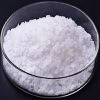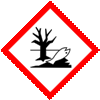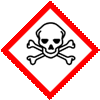Indole or 1-benzazole or 2,3-Benzopyrrole or Ketole Manufacturers, with SDS GHS MSDS Sheet |
Supplier, Manufacturer, Exporter of Indole, Muby Chemicals of Mubychem Group, established in 1976, is the original manufacturers of Specialty Chemicals, Pharmaceutical Excipient, Fragrance Food & Flavor chemicals, Reagent Grade Chemicals, Shale Gas Fracturing Chemicals in India. Mubychem Group has several manufacturing facilities spread across Western India and world wide contacts and toll manufacturers. We are exporting globally to countries like USA, Canada, Europe, UAE, South Africa, Tanzania, Kenya, Egypt, Nigeria, Cameroon, Uganda, Turkey, Mexico, Brazil, Chile, Argentina, Dubai, Korea, Vietnam, Thailand, Malaysia, Indonesia, Australia, China, Germany, France, Italy, Portugal, Bangladesh, etc. The products are offered as per required specifications and in correct shape and size in mm or meshs or microns as specified by the buyer. The participating units have one or more accreditations like FDA - cGMP and GLP approval, ISO-9001 Certified, "REACH" Registered, ISO-14001, ISO/IEC 17025, ISO-22000, FSSC 22000, ISO 45001, Kosher Certified, Halal Certified, HACCP, FSSAI. We offer Commercial Pure & IP BP EP Ph Eur USP NF JP FCC Food Grade Analytical Reagent Grades of Chemicals |
| Bookmark this Web Site -- or -- Email This Page Info to a Colleague or Yourself |
Search our website here:







Indole or 1-benzazole or 2,3-Benzopyrrole or Ketole: CAS Number: 120-72-9, EINECS EC Number: 204-420-7, Molecular Formula: C8H7N, Molecular Weight: 117.15, FEMA Number: 2593, HS Code 2933 99 20
How big is your requirement or how small
We serve it all.
Specifications, Safety Data Sheet, Manufacturing process details, Wholesale retail buy sell prices, Uses etc available on line in these pages for Indole or 1-benzazole or 2,3-Benzopyrrole or Ketole.
For SDS MSDS Sheet Click
SDS MSDS Sheet of Indole or 1-benzazole or 2,3-Benzopyrrole or Ketole Manufacturers
Indole
1-benzazole or 2,3-Benzopyrrole or Ketole Pure Suppliers

Indole is an aromatic heterocyclic organic compound with formula C8H7N. It has a bicyclic structure, consisting of a six-membered benzene ring fused to a five-membered pyrrole ring. Indole is widely distributed in the natural environment and can be produced by a variety of bacteria. Indole is a solid at room temperature. It occurs naturally in human feces and has an intense fecal odor. At low concentrations, however, it has a flowery smell, and is a constituent of many perfumes. Indoles and their derivatives are promising against tuberculosis, malaria, diabetes, cancer, migraines, convulsions, hypertension, bacterial infections of methicillin-resistant and even viruses.
General Properties and specifications of Indole or1-benzazole or 2,3-Benzopyrrole or Ketole:Appearance: White lustrous, flakey crystalline solid.
Assay: 99%
Sulfated ash: 0.05% maximum.
Iron (Fe): max. 0.001% maximum.
Odor: Feces or jasmine like.
Relative density: about 1.22
Melting point: 52C to 54C literature.
Boiling point: 253 to 254C literature.
Flash point: 121C.
Solubility: Very slightly soluble in cold water.
For Original Monographs of IP Indian Pharmacopoeia BP British Pharmacopoeia USP US Pharmacopoeia FCC Food Grade product, please check with the respective web-pages or books.
We also manufacture and supply as under:
Manufacturers:
MUBY CHEMICALS
Ambernath Mumbai, Ankleshwar Gujarat, India
TEL: (OFFICE) +912223770100, +912223726950
Current Date Time in India GMT+5:30
e-mail: info@mubychem.com
USA, Canada, Mexico and other American
neighbouring buyers may
e-mail: us@mubychem.com
Call toll-free 1-877-682-9243 (1-877-MUBYCHEM)

Copyright and Usual Disclaimer is Applicable.
Last
28 April, 2024




Exporters to USA Canada UAE Europe South Africa Tanzania Kenya Uganda Egypt Nigeria Turkey Mexico Brazil Argentina Chile Dubai etc.
Global or International Suppliers, Exporters, Importers, Manufacturers
I shall pass through this world, but once. If therefore, there is any good that I can do, or if there is any favor that I can show to a fellow human being, let me do it now. Let me not defer or neglect it. For I shall not tread this way again
INDOLE SDS GHS, SAFETY DATA SHEET
MSDS SHEET, MATERIAL SAFETY DATA SHEET 30-Apr-21
Section 1: Chemical Product and Identification
Product Name & Other Names: Indole or 1-benzazole or 2,3-Benzopyrrole or Ketole.
CAS#: 120-72-9
EINECS EC-No.: 204-420-7
Chemical Formula: C8H7N
Molecular Weight: 117.15
Relevant uses and uses advised against (if any) : Industrial Manufacturing.
Suppliers: As per letterhead above.
Section 2: Hazards Identification
GHS, Globally Harmonized System Classification in accordance with 29 CFR 1910
Classification according to Regulation (EC) No 1272/2008
Acute toxicity, Oral (Category 4), H302
Acute toxicity, Dermal (Category 3), H311
Serious eye irritation (Category 2), H319
Acute aquatic toxicity (Category 1).
Labeling according to Regulation (EC) No 1272/2008:
GHS Label Elements  Aquatic Toxicity |
GHS Label Elements |
Signal Words: Danger
Hazard Statements:
H302 Harmful if swallowed.
H311 Toxic in contact with skin.
H319 Causes serious eye irritation.
H400 Very toxic to aquatic life.
Precautionary Statements:
P264: Wash … thoroughly after handling.
P270: Do not eat, drink, or smoke when using this product.
P273: Avoid release to the environment.
P280: Wear protective gloves/protective clothing/eye protection/face protection.
P312: Call a POISON CENTER or doctor/physician if you feel unwell.
P301+330+331: IF SWALLOWED: Rinse mouth. Do NOT induce vomiting.
P302+352: IF ON SKIN: Wash with soap and water.
P332+313: If skin irritation occurs: Get medical advice/attention.
P305+351+338: IF IN EYES: Rinse cautiously with water for several minutes. Remove contact lenses if present and easy to do – continue rinsing.
P337+313: If eye irritation persists get medical advice/attention.
P362: Take off contaminated clothing and wash before reuse.
P391: Collect spillage.
P405: Store locked up.
P501: Dispose of contents/container in accordance with local/national regulation.
Classification according to EU Directives 67/548/EEC or 1999/45/EC:
Hazard Symbols:
T = Toxic
Xn = Harmful
N = Harmful, Dangerous for the environment.
Risk Phrases:
R22 = Harmful if swallowed.
R24 Toxic in contact with skin.
R36 = Irritating to eyes.
R50 Very toxic to aquatic organisms.
Section 3: Composition and Information on Ingredients
Product Name & Other Names: Indole or 1-benzazole or 2,3-Benzopyrrole or Ketole.
CAS#: 120-72-9
EINECS EC-No.: 204-420-7
Section 4: First Aid Measures
Eye Contact: Check for and remove any contact lenses. Immediately flush eyes with running water for at least 15 minutes, keeping eyelids open. Cold water may be used. Do not use an eye ointment. Seek medical attention.
Skin Contact: After contact with skin, wash immediately with plenty of water. Gently and thoroughly wash the contaminated skin with running water and non-abrasive soap. Be particularly careful to clean folds, crevices, creases, and groin. Cover the irritated skin with an emollient. If irritation persists, seek medical attention. Wash contaminated clothing before reusing.
Serious Skin Contact: Wash with a disinfectant soap and cover the contaminated skin with an anti-bacterial cream. Seek medical attention.
Inhalation: Allow the victim to rest in a well-ventilated area. Seek immediate medical attention.
Serious Inhalation: Not available.
Ingestion: Do not induce vomiting. Loosen tight clothing such as a collar, tie, belt, or waistband. If the victim is not breathing, perform mouth-to-mouth resuscitation. Seek immediate medical attention.
Section 5: Fire and Explosion Data
Flammability of the Product: Indole may be combustible at high temperature.
Auto-Ignition Temperature: Not available.
Flash Point: Not available.
Flammable Limits: Not available.
Products of Combustion: These products are carbon oxides (CO, CO2) along with some NOx
Presence of Various Substances: Not available.
Fire Fighting Media and Instructions:
SMALL FIRE: Use DRY chemical powder.
LARGE FIRE: Use water spray, fog, or foam. Avoid water jet.
Special Information: In the event of a fire, wear full protective clothing and NIOSH-approved self-contained breathing apparatus with full face piece operated in the pressure demand or other positive pressure mode. At high temperatures under fire conditions, it may produce toxic or irritating fumes. Fire-extinguishing work is done from the windward and the suitable fire-extinguishing method according to the surrounding situation is used. Uninvolved persons should evacuate to a safe place.
Section 6: Accidental Release Measures
Personal precautions, protective equipment, and emergency procedures: Ventilate area of leak or spill. Avoid breathing dust/fumes/gas/mist/vapors/spray. Use individual protective equipment (waterproof boots, suitable protective clothing, safety glasses, etc.). Restrict unprotected personnel from the area. Prevent any contact with hot surfaces. Do not approach facing the wind. Do not touch the spilled material.
Environmental precautions: Do not let the product enter drains, soil, or water sources.
Methods and materials used for containment Cleanup procedures and Storage:
Small Spill: Use appropriate tools to put the spilled solid in a convenient waste disposal container. Finish cleaning by spreading water on the contaminated surface and dispose of according to local and regional authority requirements.
Large Spill: Contain spilled material. Cover with an inert, non-combustible absorbent material, (e.g., sand, earth, diatomaceous earth, vermiculite). Use a shovel to put the material into a convenient waste disposal container. Finish cleaning by spreading water on the contaminated surface and allow to evacuate as per law.
Section 7: Handling and Storage
Precautions for safe handling: Keep away from heat and sources of ignition. Apply according to good manufacturing and industrial hygiene practices. Ensure proper ventilation. Wash thoroughly after handling. Do not drink, eat, or smoke while handling. Avoid contact with skin, eyes, and clothing. Minimize dust generation. Avoid breathing dust/fumes/gas/mist/vapors/spray. Avoid contact with eyes, skin, and clothing. Keep container tightly closed. Avoid ingestion and inhalation. Use individual protective equipment (waterproof boots, suitable protective clothing, safety glasses, etc.). Prevent any contact with hot surfaces. Ground all equipment containing material.
Conditions for safe storage, including any incompatibilities: Store in cool, dry, and ventilated area away from heat sources and protected from sunlight in tightly closed original container. Keep air contact to a minimum. Store protected from heat, sparks and ignition sources and incompatible materials. Avoid contact with skin and eyes. Avoid inhalation of dust/mist/vapor. Do not store with incompatible materials like strong oxidizing agents, iron, and iron salts.
Section 8: Exposure Controls/Personal Protection
Exposure Limits: This product does not contain any hazardous materials with occupational exposure limits established by the region-specific regulatory bodies.
Respiratory Protection: Avoid to breath directly on the product. Apply local ventilations when appropriate.
Ventilation System: A system of local and/or general exhaust is recommended to keep employee exposures as low as possible. Local exhaust ventilation is generally preferred because it can control the emissions of the contaminant at its source, preventing dispersion of it into the general work area.
Personal Respirators (NIOSH Approved): For conditions of use where exposure to dust or mist is apparent and engineering controls are not feasible, a particulate respirator may be worn. For emergencies or instances where the exposure levels are not known, use a full-face positive-pressure, air-supplied respirator.
Skin Protection: Wear protective gloves and clean body-covering clothing.
Eye Protection: Use chemical safety goggles and/or full-face shield where dusting or splashing of solutions is possible. Maintain eye wash fountain and quick-drench facilities in work area.
Other Control Measures: Maintain good housekeeping in work area. Dust deposits on floors and other surfaces may pick up moisture and cause the surfaces to become slippery and present safety hazards. Handle in accordance with good industrial hygiene and safety practice. Wash hands after handling.
Section 9: Physical and Chemical Properties
Physical state and appearance: White lustrous, flakey crystalline solid.
Odor: Feces or jasmine like.
Odor threshold: Not available.
pH: Not available.
Relative density: Not available.
Boiling Point: 253 - 254C - lit.
Melting Point: 52 - 54C - lit.
Flash point: Not available.
Auto-ignition temperature: Not available.
Decomposition temperature: Not available.
Upper/lower flammability or explosive limits: Not available.
Vapor pressure: Not available.
Vapor density: Not available.
Evaporation rate: Not available.
Flammability (solid, gas): Not available.
Partition coefficient: n-octanol/water: Not available.
Solubility(ies): Not available.
Viscosity: Not available.
Chemical Formula: C8H7N
Molecular Weight: 117.15
Section 10: Stability and Reactivity Data
Stability: Indole is stable.
Incompatibility with various substances: Reactive with Strong oxidizing agents, Iron, and iron salts.
Corrosivity: Not available.
Polymerization: No.
Section 11: Toxicological Information
Toxicity to Animals:
LD50 Oral - rat - 1.000 mg/kg
LD50 Dermal - rabbit - 790 mg/kg
Carcinogenic Effects: Classified None. by NTP, None. by OSHA, None. by NIOSH.
Mutagenic Effects: Not available.
Teratogenic Effects: Not available.
Developmental Toxicity: Not available.
Section 12: Ecological Information
Toxicity to daphnia and other aquatic invertebrates:
LC50 - Daphnia magna (Water flea) - 1 mg/l - 48 h
Toxicity to algae Growth inhibition:
EC100 - Scenedesmus acuminatus - > 10 mg/l - 96 h
Persistence and Degradability: No information available.
Mobility: No information available.
Bioaccumulation/ Accumulation: No information available.
Results of PBT and vPvB assessment: No data available for assessment.
Section 13: Disposal Considerations
Waste Disposal: To be done as per local laws.
Section 14: Transport Information
UN number: ADR/RID: 2811 IMDG: 2811 IATA: 2811
UN proper shipping name:
ADR/RID: TOXIC SOLID, ORGANIC, N.O.S. (Indole)
IMDG: TOXIC SOLID, ORGANIC, N.O.S. (Indole)
IATA: Toxic solid, organic, n.o.s. (Indole)
Transport hazard class(es): ADR/RID: 6.1, IMDG: 6.1, IATA: 6.1
Packaging group: ADR/RID: III, IMDG: III, IATA: III.
Section 15: Other Regulatory Information
U.S. Federal Regulations
SARA 313: Not applicable
SARA 311/312: Acute Health Hazard. See section 2.
California Proposition 65: This product does not contain any Proposition 65 chemicals.
16. Other Information
European Labeling in Accordance with EC Directives:
H302 Harmful if swallowed.
H311 Toxic in contact with skin.
H319 Causes serious eye irritation.
H400 Very toxic to aquatic life.
Hazard Symbols:
T = Toxic
Xn = Harmful
N = Harmful, Dangerous for the environment.
Risk Phrases:
R22 = Harmful if swallowed.
R24 Toxic in contact with skin.
R36 = Irritating to eyes.
R50 Very toxic to aquatic organisms.
Disclaimer:
**************************
Our company provides this MSDS sheet in good faith but makes no representation as to its comprehensiveness or accuracy. This SDS sheet is intended only as a guide to the appropriate precautionary handling of the material by a properly trained person using this product. The above information has been compiled from various sources and has the possibility of discrepancy and being out-dated information. Individuals receiving the information must exercise their independent judgment and do further search in determining its appropriateness for a particular purpose. In no case shall our company be liable to loss or damages by the product user.
**************************
















